
In 2021, Grant Morrison decided to stop penning stories for the major comic publishers (often referred to as The Big Two), and instead penned a novel called “Luda” and began writing on their Substack, discussing past work and experimenting with the possibilities of comics. More recently, Morrison has re-entered the comic world by contributing stories to DC Pride 2023 and Image’s Ice Cream Man. This latest news is significant because Morrison is one of the most revered writers in the industry.
Currently, Grant Morrison and Frank Quitely’s “All-Star Superman” is receiving a lot of attention due to DC Studios co-head James Gunn openly acknowledging that its atmosphere and concepts are influencing his work on “Superman.” This book has become synonymous with Morrison for newer fans. However, it’s essential to remember that there is much more to Grant Morrison than just this one piece of work.
Grant Morrison, a prolific writer in the comic book industry, has crafted a diverse range of stories – from the most imaginable tales to the unexpected. His extensive catalog stands out as one of the coolest within the entire comic world. Not only does Morrison create comics that are entertaining, but they also inspire readers. Among his masterpieces, seven stand shoulder-to-shoulder with the exceptional “All-Star Superman.
The Filth

In the ’90s, Grant Morrison shared the widespread optimism about the new millennium. Yet, contrary to expectations, the 21st century turned out to be much more distressing than anticipated. This disillusionment led him to collaborate with artist Chris Weston on “The Filth,” a series that serves as the grim counterpart to “The Invisibles.” While “The Invisibles” focuses on a band of freedom fighters battling malevolent forces threatening the world, “The Filth” delves into those very dark forces. The story revolves around Greg Feeley, a British man with unique quirks, who discovers he’s secretly part of the Hand – a group tasked with maintaining the status quo. This work showcases Morrison at his most eccentric, offering readers complex ideas intertwined with explicit language, sexual content, and violence fitting for a series titled “The Filth.” Weston’s artwork perfectly complements this narrative, bringing Morrison’s ideas to life in intricately detailed panels. “The Filth” is an intricate exploration of darkness, showcasing the depth of Morrison’s imagination.
The Multiversity
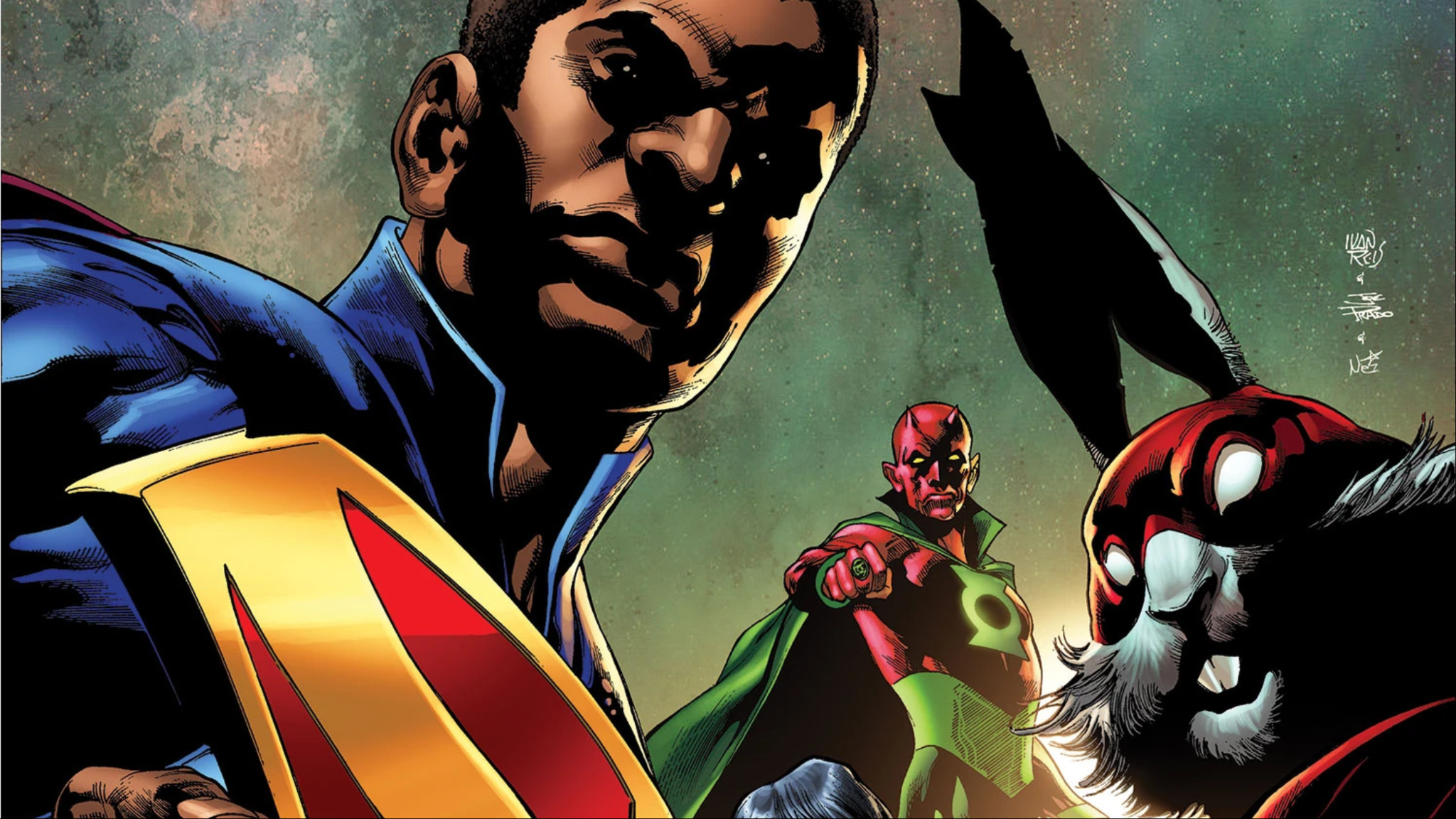
Morrison, having grown up immersed in Silver Age DC and deeply fond of the DC Multiverse, began hinting at The Multiversity – a comprehensive guide for the revamped DC Multiverse – following their jaw-dropping crossover event known as Final Crisis. This tantalizing teaser would not bear fruit until 2014, but the anticipation proved well worth it. The Multiversity is a two-issue miniseries comprising seven one-shots, each focusing on a distinct Earth, with Pax Americana, Thunderworld Adventures, and Ultra Comics being particularly noteworthy. These issues offer glimpses into realms unparalleled in their originality. However, what truly sets The Multiversity apart is its exploration of the essence of comics themselves. Morrison subscribes to the notion that fiction, given our role in creating and engaging with it, holds equal validity as anything else in existence. Throughout the narrative, comics serve as a medium for transferring ideas across universes, while Pax Americana and Ultra Comics capitalize on the reader’s interaction with comics to narrate their stories. In essence, The Multiversity is an exhilarating superhero adventure, but it also stands as a heartfelt homage to the transformative power of comics and their capacity to shape both readers and the world around them.
Doom Patrol

Grant Morrison crafted exceptional team comics, beginning with his groundbreaking run on the Doom Patrol. In this series, from issue #19 to #63, Morrison delved into the Silver Age roots of the Doom Patrol and identified a recurring theme – trauma. Trauma serves as the backbone for Morrison’s Doom Patrol, demonstrating its impact on both the afflicted individuals and those around them, emphasizing the significance of overcoming it. Morrison collaborated with artist Richard Case, along with several guest artists, to produce action-packed superhero content that was unprecedented, ranging from the urban landscape of Orqwith to Danny the Street, the Telephone Avatar, and beyond. The series showcases superheroes at their most bizarre, even before discussing characters like Flex Mentallo or the Brotherhood of Dada. Morrison’s Doom Patrol ventured into realms never anticipated, which is a significant part of its appeal. When it was being published, there was no comic book quite like Doom Patrol, and even today, it remains a unique masterpiece that transports readers to a world where trauma alters everything. Yet, as long as you have your friends by your side, you’ll never have to confront it alone.
JLA
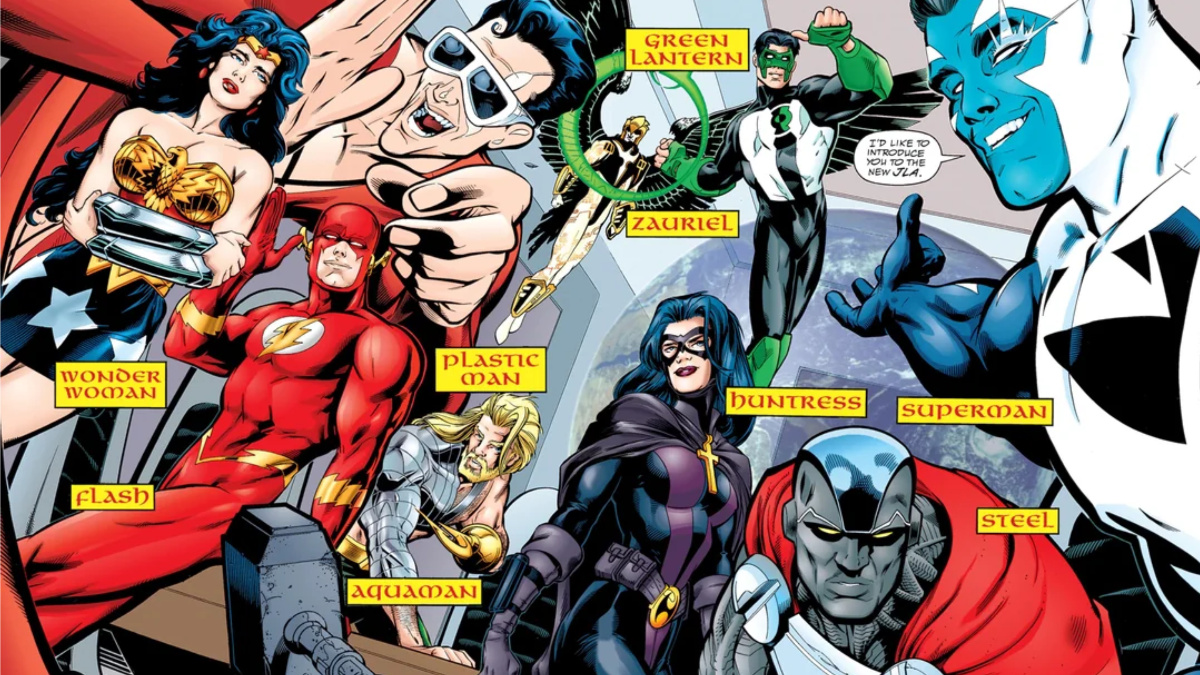
In 1996, Morrison was entrusted with the task of writing DC’s flagship team, the Justice League (JLA), alongside artist Howard Porter. Morrison’s JLA represented an ideal version of the team, assembling DC’s top-tier heroes for the first time post-Crisis. The duo delivered exhilarating superhero action, escalating the threats from White Martians to reimagined classic villains, rogue angels, Darkseid, and a universe-consuming weapon. Yet, the spectacle was not the only highlight; Morrison breathed life into the characters, crafting stories that reflected their true selves. Essentially, it was a superb superhero comic. Although Porter wasn’t the sole artist on the book, he illustrated most of Morrison’s issues, and his work was exceptional. He beautifully translated Morrison’s vision into reality, making you feel like you witnessed electric blue Superman grapple with an angel, with the Atom defeating Darkseid with Green Arrow’s aid. JLA showcased the true potential of superhero comics, offering arguably the best Justice League run ever published.
Animal Man
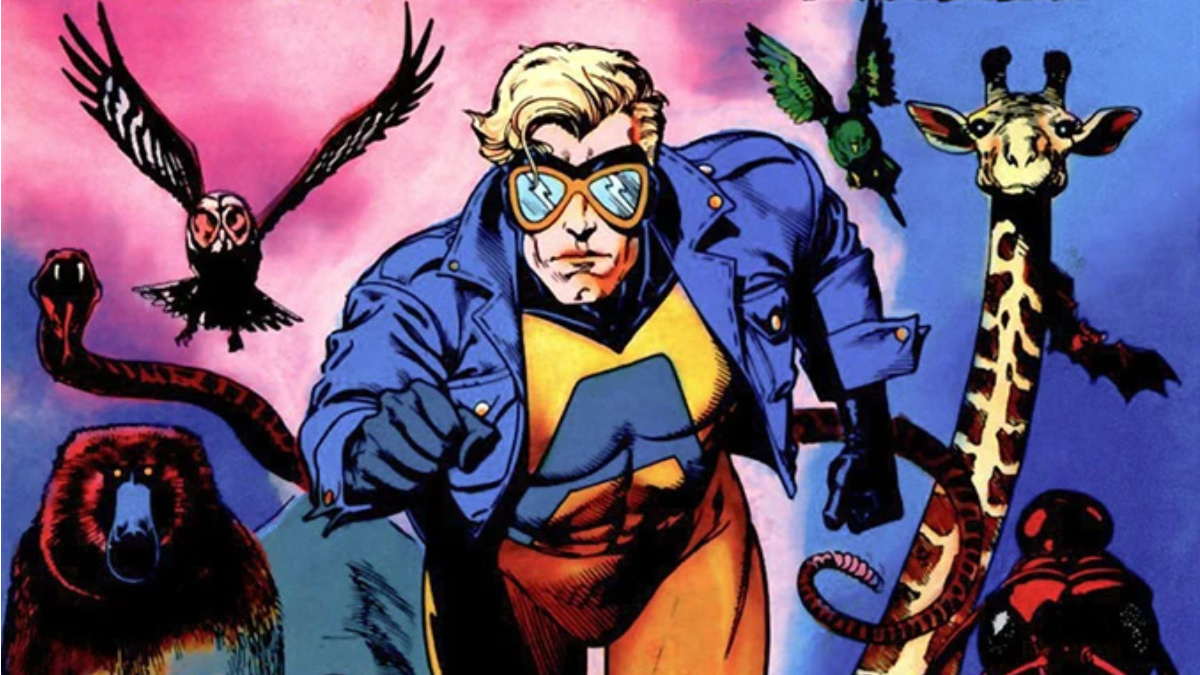
In simpler terms, “Animal Man” by Grant Morrison, illustrated by Chaz Truog and Tom Grummett, served as a groundbreaking catalyst for Morrison’s career, much like Helen of Troy sparked the Trojan War. Debuting in 1988, this was Morrison’s inaugural work for DC Comics, breathing new life into a lesser-known Silver Age character named Animal Man who had been last seen in “Crisis on Infinite Earths”. Initially conceived as a mini-series, it pitted Animal Man against B’Wana Beast, while addressing the grim realities of animal testing. The series was so popular that it evolved into an ongoing comic, introducing concepts like “The Coyote Gospel”, which explored the connection between fiction and reality.
“Animal Man” pioneered several aspects when it was released, both for its powerful messages about animal preservation and environmentalism and for the profound ideas Morrison infused in each issue. Truog drew most of the issues, giving the DC house style a unique twist. The series also showcased a superhero with a family, making Animal Man’s wife Ellen and children Maxine and Cliff feel real and relatable. While the final issue, where Animal Man meets Grant Morrison, is well-known, there’s much more to “Animal Man” than just that moment. With this series, Morrison demonstrated the full potential of his storytelling, making it one of the best DC Comics ever published.
Final Crisis
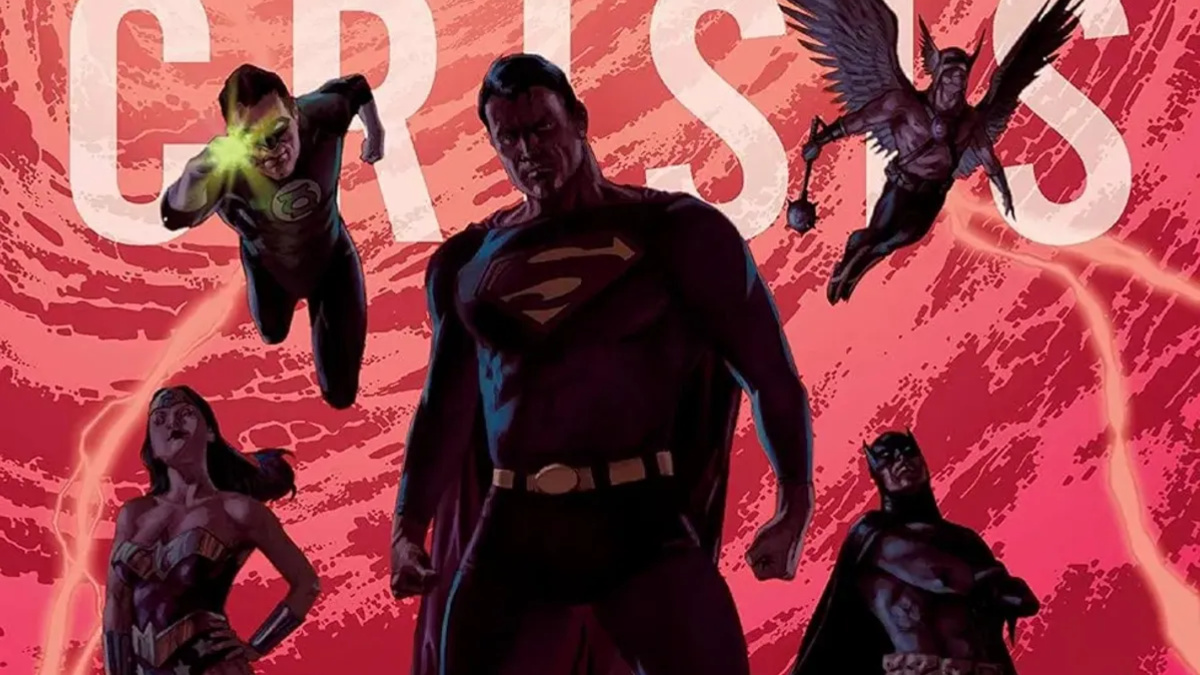
The masterpiece known as “Final Crisis” showcases unparalleled genius, crafted by Grant Morrison and artists J.G. Jones, Carlos Pacheco, and Doug Mahnke. This groundbreaking comic series encapsulates almost every concept that Morrison introduced during his career, resulting in an event unlike any other.
“Final Crisis” revolves around Darkseid acquiring the Anti-Life Equation as a desperate move to obliterate the Multiverse following the demise of his latest form. However, this is just the tip of the iceberg, as Darkseid and his confederates unveil a scheme they’ve been orchestrating secretly on Earth for months, leaving Earth’s heroes racing against time to thwart their nefarious plans.
“Final Crisis” stands tall among event comics in terms of grandeur, rivaling the legendary “Crisis on Infinite Earths,” while simultaneously narrating the ultimate struggle between good and evil. It is one of the few event comics that can be considered the climax of the Multiverse, a story that might be viewed as the final chapter in the superhero genre.
“Final Crisis” is an intricate work, with layers upon layers requiring multiple readings to fully grasp its depth. Yet, it proves just as rewarding as it is challenging. This epic tale serves as the ultimate testament to the captivating nature of the DC Multiverse, a story that could only have been penned by a talent like Grant Morrison.
The Invisibles
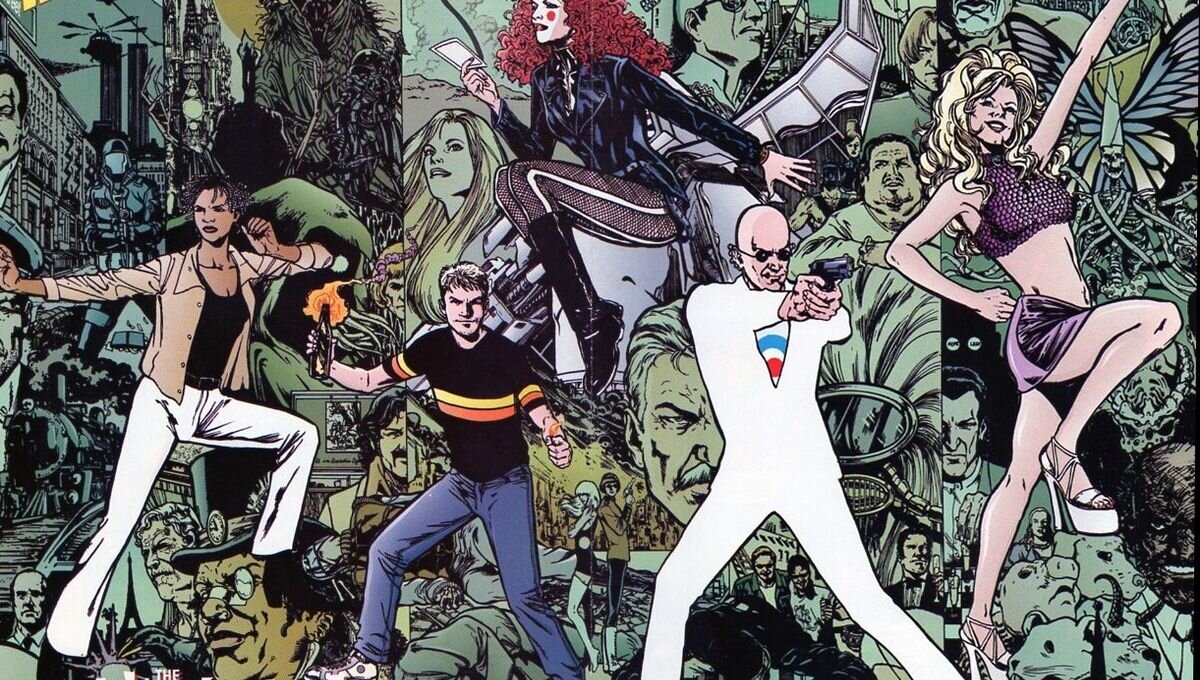
The Invisibles, penned by Morrison, represents his most daring undertaking – a self-owned comic series from the ’90s that ventured into realms unanticipated by many. This graphic novel narrates the battle between The Invisibles, freedom fighters and insurgents challenging the rotten system of power in the present, and the Outer Church, malevolent entities originating from a sick universe dominated by rigid order, secretly governing our world. The Invisibles serves as a deeply personal creation for Morrison, who modeled two main characters, King Mob the assassin and transgender sorceress Lady Fanny, after themselves. Moreover, it offers a mirror to society at the close of the 20th century. The Invisibles resonates with the spirit of the ’90s, weaving together themes from ’90s popular culture – such as utopian ideals, conspiracy theories, shifting social and technological trends, drugs, dance music, fashion, violence, sex, and much more – to craft a narrative that functions like a powerful incantation. The impact of The Invisibles lingers with readers long after they finish reading, leaving an inexplicable yet undeniable impression. Morrison collaborated with exceptional artists on the series – including Jill Thompson, Chris Weston, Steve Yeowell, and Phil Jimenez, who illustrated most of the comic, as well as frequent collaborators like Philip Bond and Frank Quitely – imbuing the work with a visual style unlike any other.
Read More
- Best Race Tier List In Elder Scrolls Oblivion
- Days Gone Remastered Announced, Launches on April 25th for PS5
- Elder Scrolls Oblivion: Best Pilgrim Build
- Gold Rate Forecast
- Elder Scrolls Oblivion: Best Thief Build
- Yvette Nicole Brown Confirms She’s Returning For the Community Movie
- Ludicrous
- Where Teen Mom’s Catelynn Stands With Daughter’s Adoptive Parents Revealed
- Brandon Sklenar’s Shocking Decision: Why He Won’t Watch Harrison Ford’s New Show!
- Elder Scrolls Oblivion: Best Sorcerer Build
2025-04-27 01:12